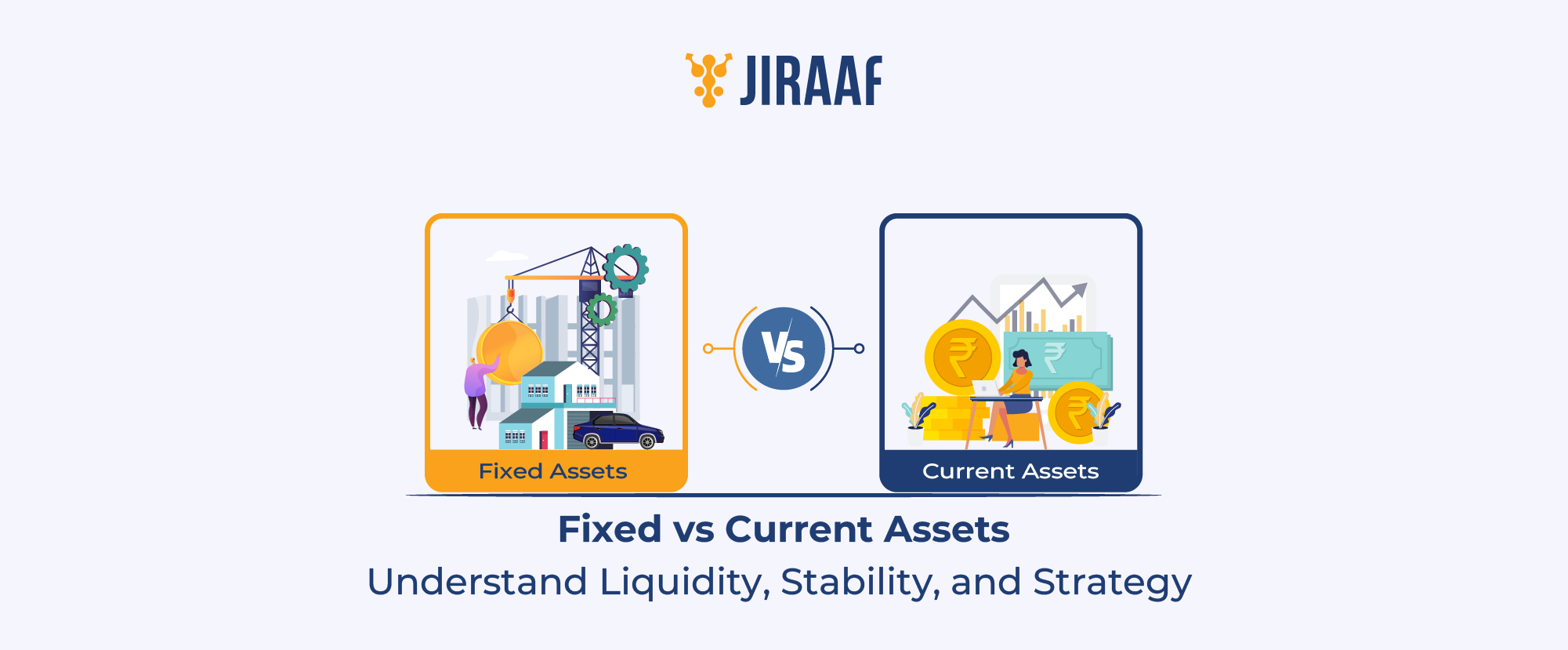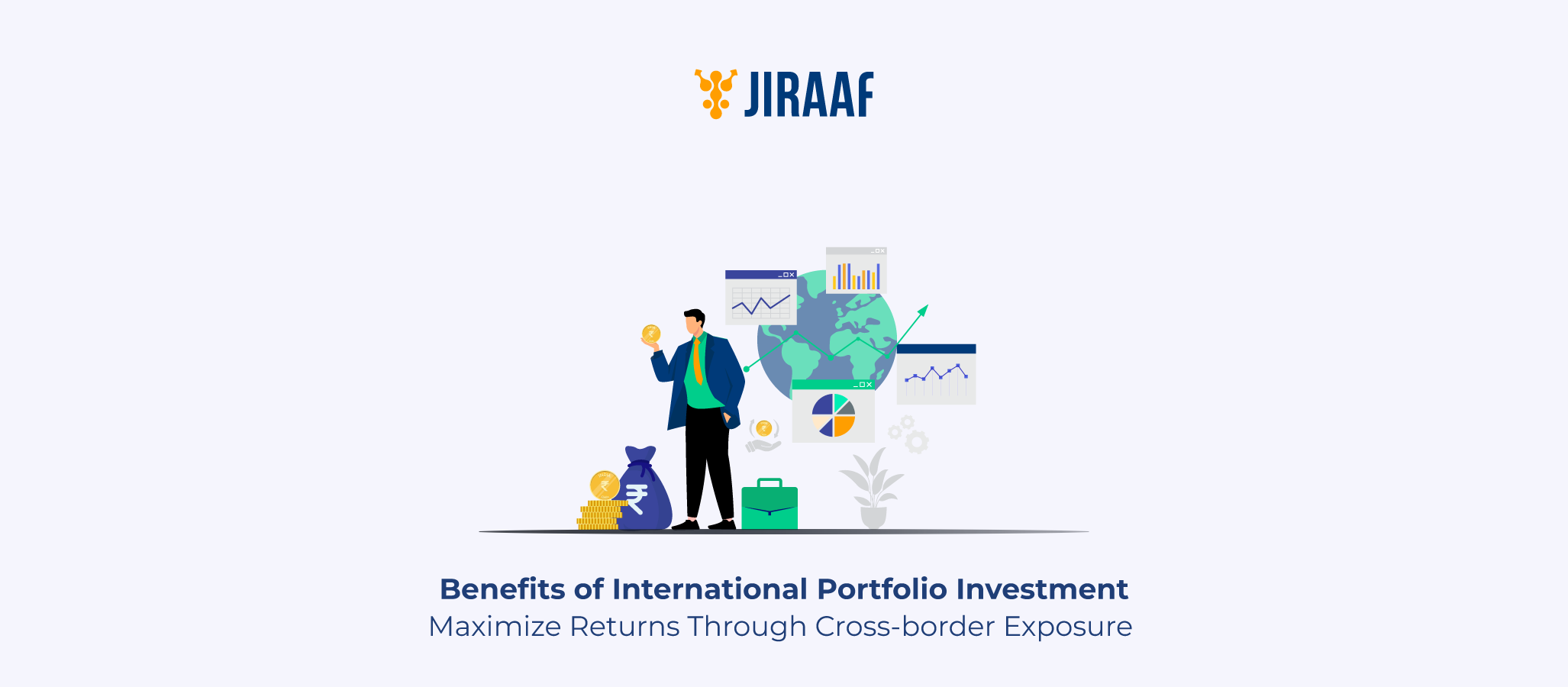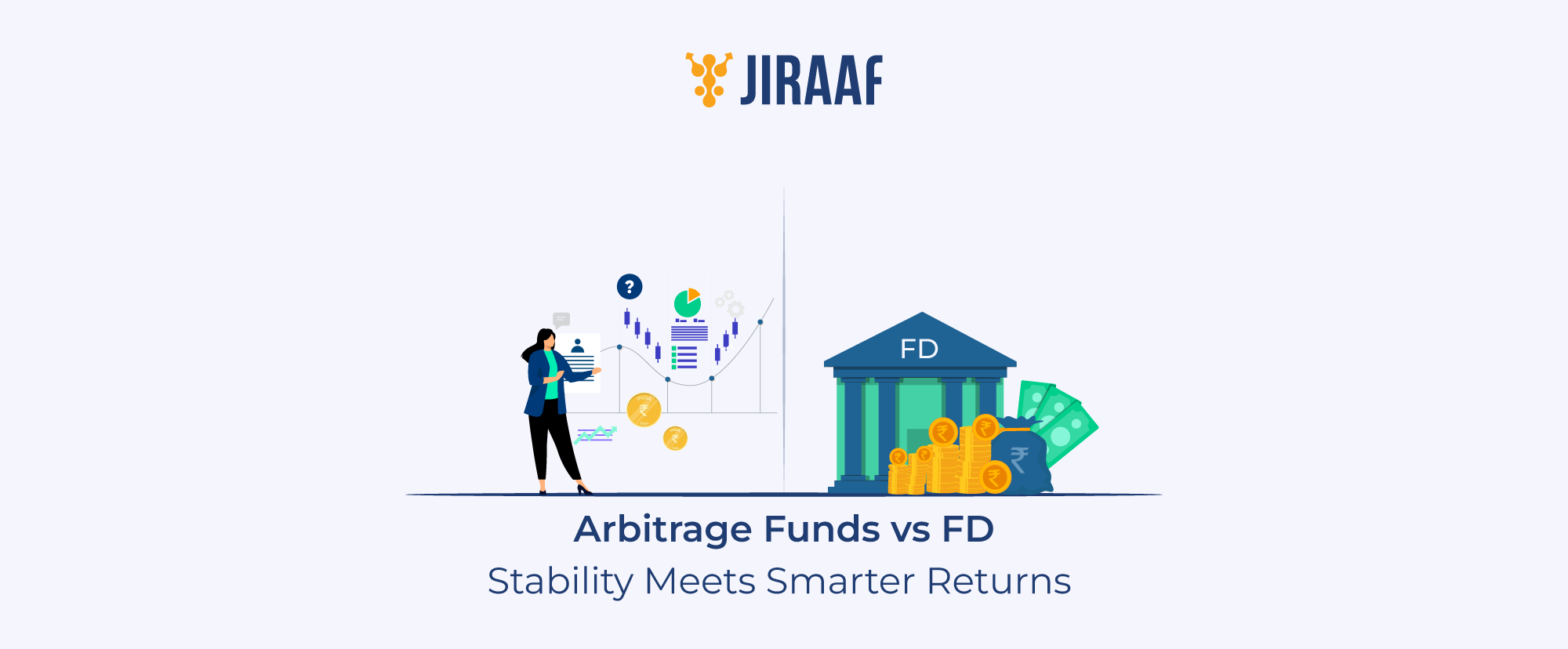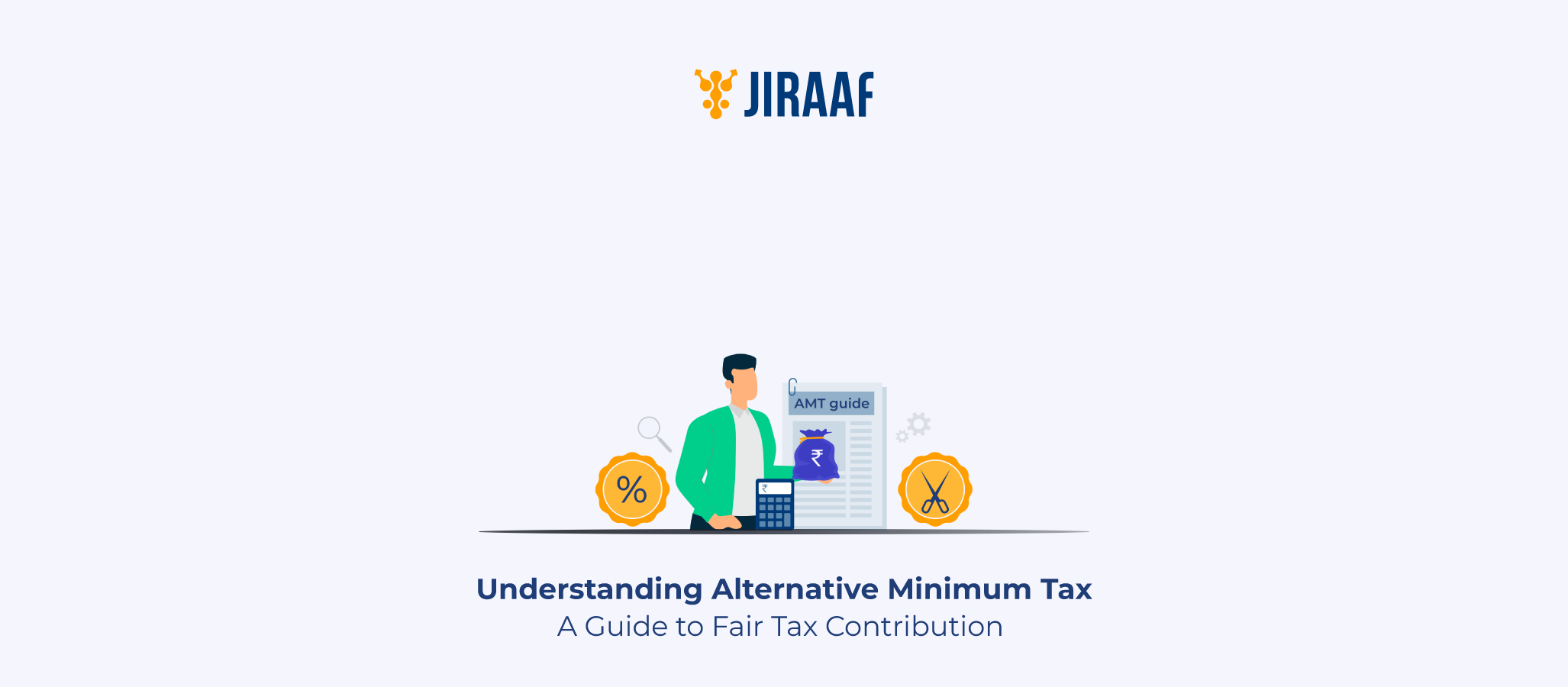A company’s balance sheet paints a picture of the company’s financial health at that specific point of time. It shows how well the company has allocated its resources for stability or growth, or any other goals. And at the heart of this picture lies the company’s assets; the resources that power both day-to-day functioning and long-term growth.
Within this picture, fixed assets and current assets form two sides of the same story: one supports immediate operations, while the other builds the foundation for long-term performance.
Understanding how these two categories differ helps reveal how efficiently a business manages its resources. It shows whether the company is maintaining enough liquidity to handle short-term needs while still investing wisely for long-term goals.
In the following sections, we’ll explore what each asset type represents, how they differ in purpose and use, and why recognizing these distinctions is key to interpreting a company’s overall financial strength.
What are Current Assets?
Current assets are the resources a company expects to convert into cash, sell, or consume within one accounting year or one operating cycle, whichever is longer. They keep everyday operations running smoothly and ensure the business has enough liquidity to meet short-term needs—from paying suppliers to managing payroll and maintaining inventory levels. In essence, they reflect how efficiently a company manages its working capital.
A balanced level of current assets allows a business to stay agile—neither short on cash nor holding idle funds that could earn better returns elsewhere. For investors, this balance is a key indicator of short-term financial health and the company’s ability to honor its commitments without relying on external debt.
Common examples of current assets include:
- Cash and cash equivalents: The most liquid assets used for immediate expenses or short-term opportunities
- Accounts receivable: Payments expected from customers for goods or services already provided, essentially, near-term inflows
- Inventory: Goods in various stages (raw materials, work-in-progress, or finished) that will soon be sold to generate revenue
- Marketable securities: Short-term investments such as treasury bills or commercial papers that can be quickly converted into cash when needed
- Prepaid expenses: Payments made in advance—like rent or insurance, that reduce future cash outflows within the year
Efficient management of these assets helps maintain liquidity in the company, reduce borrowing needs, and ensure stability—all the factors that investors closely watch before committing to fixed-income instruments or company bonds.
Having looked at what keeps the business running day-to-day, let’s turn to the assets that build and sustain its capacity over multiple years.
What are Fixed Assets?
Fixed assets are the physical resources that a company depends on to operate and grow over the years. They are not meant to be sold or converted into cash quickly. Instead, they support the business in producing goods, delivering services, and generating revenue steadily over time.
In accounting, fixed assets are classified as part of non-current assets, but the two terms are not identical. Fixed assets are tangible and directly involved in operations, for example land, buildings, machinery, and vehicles. Non-current assets, on the other hand, also include items such as goodwill, patents, or long-term investments that are either intangible or financial in nature.
A company’s level of investment in fixed assets often reveals its long-term plans and operational strength. Expanding factories, upgrading equipment, or purchasing new vehicles usually signal an intent to scale and become more efficient. Over time, most fixed assets lose value due to usage and wear. This process, known as depreciation, ensures that the company’s financial statements reflect the true cost of maintaining these assets and give a clearer picture of profitability.
Common examples of fixed assets include:
- Land and buildings: These provide the physical base for manufacturing, offices, or retail operations. Land generally does not depreciate, and its value is often carried at historical cost, while buildings depreciate over time.
- Machinery and equipment: These drive production and service delivery, which is vital in manufacturing, logistics, and construction industries.
- Vehicles: These support logistics, distribution, and business mobility.
- Computers and IT systems: These power digital infrastructure and operational efficiency, especially in service-based sectors.
- Furniture and fixtures: These support daily business activities in offices, stores, or facilities.
Now that we understand both sides—short-term liquidity and long-term stability—it’s time to see how these two asset groups differ and why that distinction matters in financial analysis.
Key Difference Between Fixed Assets and Current Assets
While both appear under “Assets” on the balance sheet, they serve completely different roles in a company’s financial story. Current assets keep the business running day-to-day, while fixed assets fuel its ability to grow over time.
| Basis of Comparison | Fixed Assets | Current Assets |
| Nature | Long-term, used for production or operations | Short-term, easily convertible into cash |
| Conversion Period | More than one accounting year or operating cycle | Within one accounting year or operating cycle |
| Purpose | To generate revenue over the long term | To manage daily operations and liquidity |
| Examples | Land, machinery, equipment, vehicles | Cash, inventory, accounts receivable, prepaid expenses |
| Depreciation | Subject to depreciation (except land) | Not depreciated but may fluctuate in value |
| Liquidity | Illiquid | Highly liquid |
| Accounting Treatment | Recorded at cost minus accumulated depreciation | Recorded at the lower of cost or net realizable value |
| Impact on Business | Affects production capacity and long-term growth | Affects cash flow and short-term financial health |
What may seem like a simple list of differences shapes how a company records its numbers and makes financial decisions—from managing cash flow to planning new investments. Let’s understand why distinguishing between them is so critical in accounting and financial analysis.
Importance of Differentiating Fixed and Current Assets in Accounting
Understanding this distinction goes far beyond classification. It shapes financial interpretation, investment evaluation, and operational planning.
Here’s why it matters:
1. Accurate Financial Picture
Correct classification ensures that the balance sheet reflects reality. Financial ratios are distorted and a false perception of stability or liquidity is created when a factory is listed as a current asset or a short-term deposit as a fixed one. Accurate reporting creates the foundation for reliable analysis.
2. Measuring Liquidity and Flexibility
Current assets show how well a business can pay its short-term obligations, such as operating costs, supplier payments, and salaries, without borrowing money from other sources. They demonstrate the company’s ability to weather difficult times and take advantage of immediate possibilities without suffering financial hardship.
3. Judging Capital Efficiency
Fixed assets reflect how deeply a company has invested in infrastructure and operations. When compared against revenues or profits, they show how efficiently that long-term capital is being used to generate returns—a key marker of management effectiveness.
4. Tracking Depreciation and Real Profitability
Fixed assets lose value over time, and this depreciation directly affects both reported earnings and taxes. Understanding this link helps separate accounting adjustments from real operating performance.
5. Reading the Risk and Return Balance
The asset mix of a company reveals its risk profile and business strategy. Stability and scale are suggested by heavy fixed assets, while adaptation is slower. Companies with few assets rely more on liquidity; they can change course more quickly but are frequently more vulnerable to volatility.
6. Forecasting Cash Flows with Confidence
It is easier to forecast cash inflows when one knows which assets will turn into cash and when. Better planning is made possible by this clarity, which guarantees smooth operations free from cash shortages or idle capital.
Conclusion
The way a company positions its fixed and current assets often reveals the real discipline behind its financial decisions. Current assets keep the business flexible, ensuring it can pay bills, handle operations, and respond to opportunities quickly. Fixed assets, meanwhile, reflect long-term vision and stability, showing how the company invests to expand and strengthen its foundation. When managed in harmony, the two create a cycle of liquidity and growth.
For investors, this balance tells a deeper story than profit figures alone: it shows whether a company is simply surviving quarter to quarter or building the capacity to grow for years to come.









